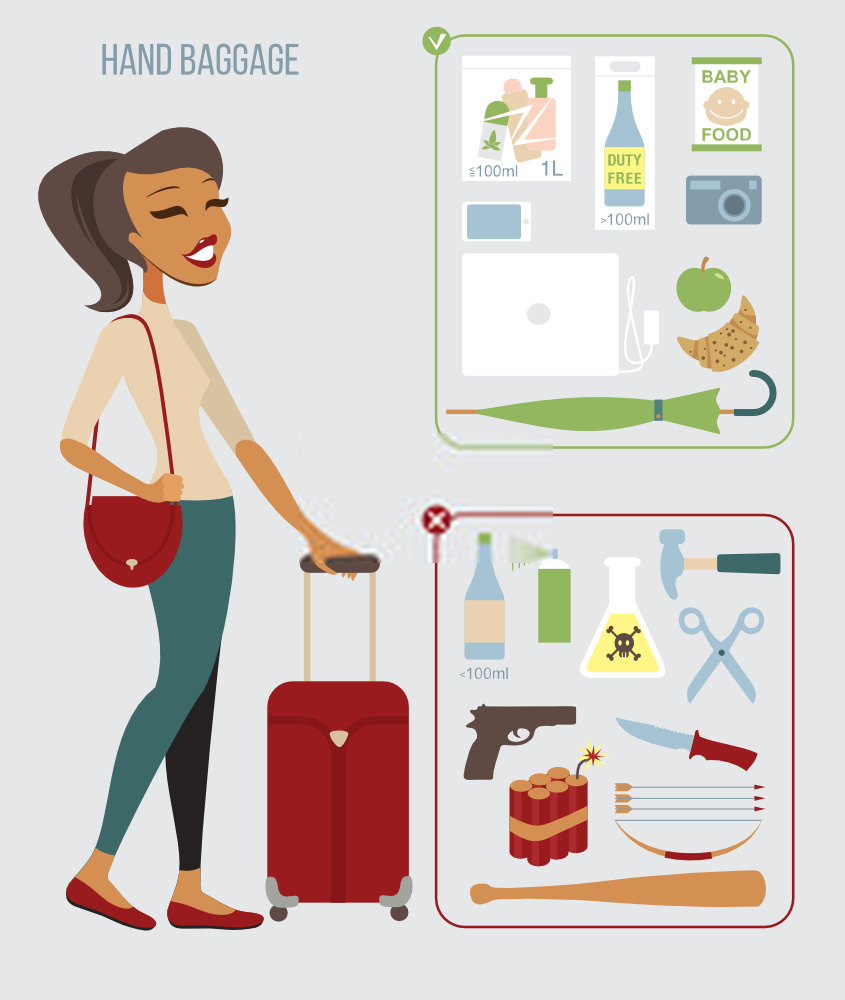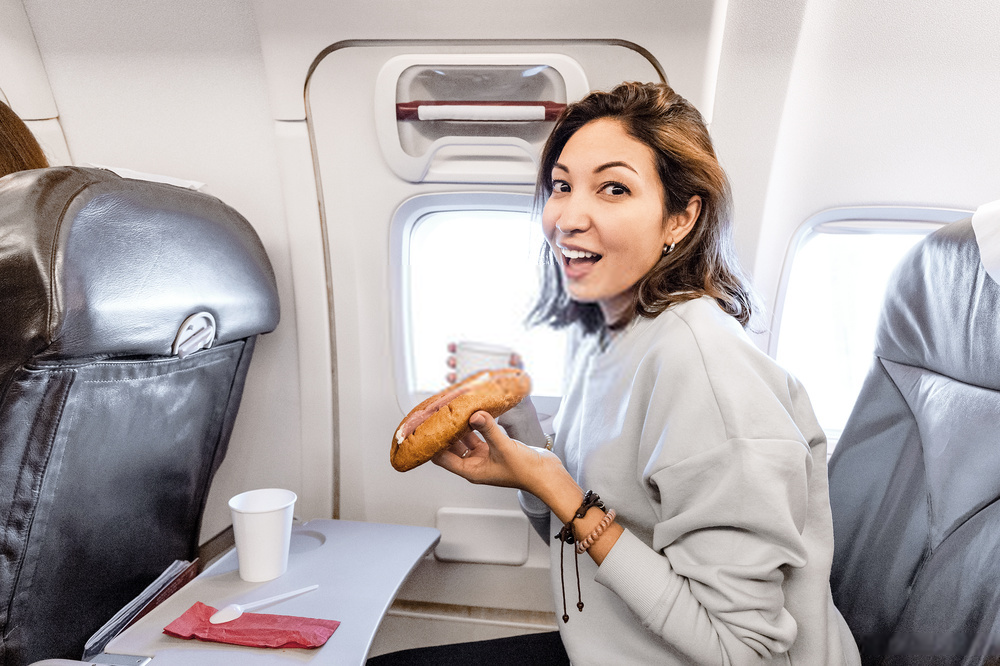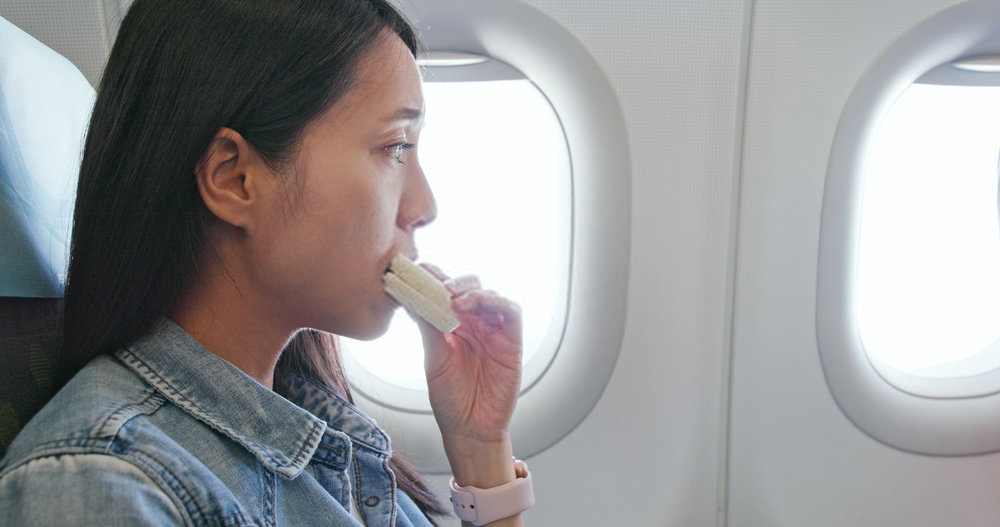
The Transportation Security Administration (TSA) does not have very stringent rules on food being carried on planes by the passengers, as long as they are checked before boarding the airplane. Any kind of food is allowed on a plane, provided the Transportation Security Administration checks and approves that the foods are fit enough for air travel.
The Transportation Security Administration checks can become tiresome and time-consuming if the passenger carries a lot of food items. So, it is always advisable to carry just the minimum or the adequate amount of food that is necessary for the passenger to eat during the flight. An overload of food may make the passenger look suspicious in the eyes of the transportation Security Administration.
Not all foods are approved easily by the TSA. The Transportation Security Administration has special rules regarding certain foods, whereas some foods are banned upfront from being airborne. In the following sections, we have made an attempt to tell you how to carry your food on an airplane without much of a hassle and also what kind of foods are allowed to be taken on board by the passenger while boarding the flight.
These rules are pretty simple and following them will help a passenger have a pleasant journey. As a passenger, when you aware of the food restrictions and follow all the rules properly, you will also save a lot of time that you would otherwise spend in explaining your stand to the officers at the Transportation Security Administration.
Rules to be followed while traveling with food on airplanes

A frequent flier will know these rules by heart and will accommodate his luggage and food that he carries in such a way that not a lot of time is wasted in Transportation Security Administration checking. The following are some of the main rules to be followed to have a seamlessly comfortable flying experience.
The most important rule of the Transportation Security Administration is the 3-1-1 rule. The frequent fliers are experts when it comes to this rule. The 3-1-1 rule is that any passenger can bring liquids like are more than 3.4 ounces, the Transportation Security Administration will throw them out of the passenger’s luggage. The complete explanation for the 3-1-1 rule is that only 3.4 ounces of a bottle of any liquid, with all the bottles in 1 zip lock bag carried by only one passenger is allowed shampoos, juice, jams, sauces, hand sanitizers, etc. if they weigh under 3.4 ounces. If these liquids on a plane.
Anything that is more than 3.4 ounces will be ceased from the passenger and thrown out of the luggage by the Transportation Security Administration in their checkpoints. If you want to carry a necessary item, which is, unfortunately, more than the threshold allowed as per the 3-1-1 rule, you can explain the situation to the TSA authorities with necessary proofs, and can then proceed to carry the needed liquids on board after the TSA authority gives you permission to do the same. This usually happens when people with any medical conditions are flying and need medications often.
The 3-1-1 rule is mainly for the liquids. This means the passengers can bring home-cooked or baked food or even store-bought food inside the airplanes once the food is checked by Transportation Security Administration authorities in the checkpoints at the airports. You can bring your own sandwiches, salads, cakes, cookies, biscuits, gravy, meats, seafood, bread, cheese, chocolates, dried fruits, hummus, candy, cereal, fruits, baby food, etc. It is practical to carry only the necessary food items that one needs to eat during the travel time and not to carry an overload of food and clog the hand luggage with food items.
The Transportation Security Administration is very lenient when it comes to allowing passengers to bring their own food, thereby making it easy for the passengers. If the rules of TSA are followed thoroughly without taking any advantage of the TSA, a passenger can have a very pleasant flight with their own food that they can eat while traveling. One cannot try to take advantage of this lenient nature of TSA, as the officers who man the Transportation Security Administration checkpoints are very vigilant and check all the passengers thoroughly before letting them get on the airplane with their own food.
Foods that are suitable and comfortable for air travel

Carrying foods that need a transfer from one utensil to another is not a wise choice. It is always advised to carry foods that don’t create too much mess and also which won’t need a lot of utensils to eat. The best type of foods to carry during air travel are dried fruits, nuts, cut or chopped vegetables and fruits, homemade chips with hummus, chocolates, and cereals. You should also plan in advance about the way you eat the food without making a mess. This way, you will not disturb your co-passengers in any way.
A variety of flavored foods can be brought because consuming the same taste would start to get boring and sometimes could also lead to motion sickness. Easily perishable foods should be consumed first, and the foods that will last longer should be saved for later consumption. A passenger should also avoid eating too many salty foods, as this can, in turn, lead to a large amount of fluid retention in his body, making him feel uncomfortable.
It is always advised to eat small portions of food at regular intervals, rather than having large meals at a single point of time. This is because people tend to get bored while traveling and will start to get restless when they have nothing much to do. Especially in air travel, a passenger has to sit through the whole travel time which will be tiresome and boring without anything to do.
Conclusion
Getting one’s own food in an airplane is easy, as long as one follows all the rules that are prescribed by the Transportation Security Administration. Not following the rules will not only waste the passengers’ time but also will end up in the TSA authorities throwing the food away.
Written By Boyan Minchev
